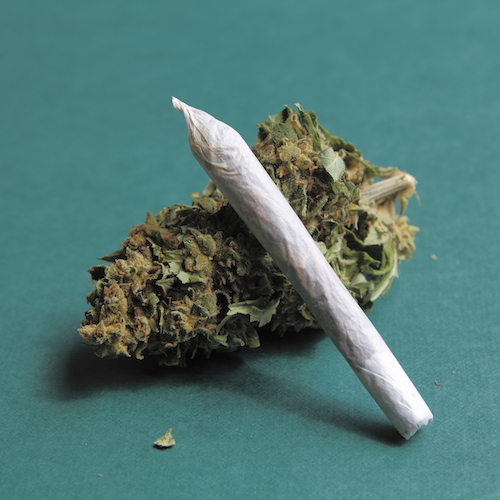Companies and Brands
Marijuana News Roundup: California's Cannabis Crop Worth $23 Billion

Published:
Last Updated:

The value of California’s marijuana crop in 2015 has been estimated at $23.3 billion. That’s more than the combined value of the state’s next five largest crops. And that’s before recreational use was approved by voters in November and 2 years before recreational use is expected to be implemented.
Because growing pot for anything but medicinal use is illegal in California, the estimate of the crop’s value was based on the number of plants seized from federal lands. According to the Orange County Register, federal agents seized 2.64 million marijuana plants from national forests in California in 2015.
A United Nations report estimated that global law enforcement agencies seized 10% to 20% of produced drugs in 2015. Using that as a base, California would have had a total of 13.2 million plants. If each plant produced a (conservative) one pound of cannabis and it sold for $1,765 per pound, the total value would have been $23.3 billion.
The highest estimate we’ve seen for the value of California’s marijuana crop following legalization is that it will total $6.5 billion in 2020. But that’s only for legal, in-state medicinal and recreational use. We leave it as an exercise for the reader to figure out where the rest of it goes.
Health Insurers Won’t Cover Medical Marijuana in North Dakota
North Dakota voters overwhelmingly approved the legalization of medical marijuana, and lawmakers are grappling with launching the program. But patients are about to learn that legalization does not mean insurance will cover the cost.
Major health insurers in North Dakota have said they will not provide coverage for medical marijuana, which voters approved in the November election by a margin of almost 64 percent, citing what they say is inadequate evidence of its effectiveness.
“We don’t cover it in Minnesota nor will we in North Dakota,” said Greg Bury, senior manager for public relations at Medica. “We don’t believe the efficacy has yet been established.”
Medica’s policy, Bury said, is to “look for evidence-based literature and studies that demonstrate safety, effectiveness and effect on health outcomes.”
Thus far, he said, Medica believes that evidence is lacking to justify coverage of medical marijuana.
Read more at The Bismarck Tribune.
Bills Calling for Marijuana Legalization in Connecticut Has Police Chiefs Concerned
Law enforcement officials across the state will be paying close attention to proposed legislation on marijuana legalization.
Connecticut Police Chiefs Association President John Salvatore said while the group has not taken an official stance on proposed bills, there are some reservations among chiefs about permitting marijuana for recreational use.
“That’s largely from what we’re witnessing from other states,” Salvatore said. “This is definitely a concern for us.”
There are several bills this session, by both Democrats and Republicans in the House and Senate that would make recreational use legal in the state. Senate President Martin Looney, D-New Haven, pre-filed legislation calling for the legalization and taxation of marijuana, suggesting revenue from marijuana sales should go to the general fund. State Rep. Melissa Ziobron, R-East Haddam, also filed a bill that would make it legal for anyone over 21 to use it.
A 2015 Quinnipiac University Poll found that 63 percent of Connecticut voters support legalization for adults.
Read more at the New Haven Register.
Marijuana Brands Can Trademark Almost Anything, Except Marijuana
Hi is a cannabis brand. Its logo — “hi” in white letters inside an orange circle — can be found above the front door of a Portland, Ore., marijuana shop and on a handful of cannabis products, including massage oil and Hi Releaf pain-relief balm.
But you wouldn’t guess any of that from Hi’s trademark filings. In 2015, the brand’s parent company, Cannabis Sativa Inc., filed a trademark application — not for any of Hi’s core products, but for hats, T-shirts and a wide array of other apparel.
If the U.S. Patent and Trademark Office signs off on the application, Cannabis Sativa would be able to stop other companies from using the Hi brand on clothing, but it might not be able to stop rivals from setting up Hi-brand marijuana shops or selling knockoff Hi-brand products.
This is the odd state of affairs for trademark protection in the cannabis industry, one of the many byproducts of the gap between state and federal marijuana laws.
Read more at the Los Angeles Times.
America’s $6.7 Billion Marijuana Habit, Mapped
The marijuana industry is at a crossroads. Voters have approved recreational marijuana measures in eight states plus the District of Columbia. When these laws become fully implemented in the next few years, more than one in five American adults will live in places where they can walk into a store and legally purchase marijuana.
According to one estimate by ArcView Group, a marijuana industry consulting firm, the legal marijuana market rang up $6.7 billion in sales in 2016.
Legal or not, millions of Americans already use marijuana regularly. According to the most recent National Survey on Drug Use and Health, 8.3 percent of Americans age 12 and over — 22 million people — used marijuana on a monthly basis in 2015. And close to 37 million people used marijuana at least once that year.
The latest data release from that survey breaks those numbers down even further, looking at marijuana consumption at the state level. It finds that there’s considerable variation in the prevalence of marijuana use by state.
Read more at The Washington Post.
Thank you for reading! Have some feedback for us?
Contact the 24/7 Wall St. editorial team.